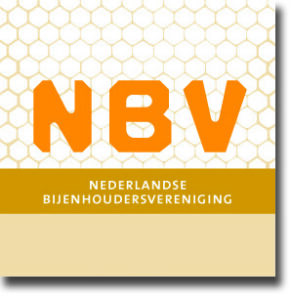Rewilding van honingbijen
tekst Delphine Panziera (Bijen@wur) en Henk van der Scheer
Literatuur
Blacquière, T. en Panziera, D., 2022. Bescherming van honingbijen. Bijenhouden 16(5):9-11.
Broughton, R.K., Hebda, G., Maziarz, M., Smith, K.W., Smith, L. en Hinsley, S.A., 2015. Nest-site competition between bumblebees (Bombidae), social wasps (Vespidae) and cavity-nesting birds in Britain and the Western Palearctic. Bird Study 62:427–437.
Bruinsma, W. en Heemert, K. van, 2020. Natuurlijke selectie: leven met varroa. Bijenhouden 14(2):14-16.
Coelho, J, en Sullivan, J., 1994. Colonization of wildlife nest boxes by honey bee swarms. American Bee Journal 134:697–699.
Kohl, P.L. en Rutschmann, B., 2018. The neglected bee trees: European beech forests as a home for feral honey bee colonies. PeerJ 6:e4602.
Liébana, M.S., Sarasola, J.H., Santillán, M.Á., 2013. Nest-box occupancy by neotropical raptors in a native forest of central Argentina. Journal of Raptor Research 47:208–213.
McNally, L.C. en Schneider, S., 1996. Spatial distribution and nesting biology of colonies of the African honey bee Apis mellifera scutellata (Hymenoptera: Apidae) in Botswana, Africa. Environmental Entomology 1996, DOI:10.1093/EE/25.3.643.
Oldroyd, B.P., Lawler, S.H. en Crozier, R.H., 1994. Do feral honey bees (Apis mellifera) and regent parrots (Polytheïst anthopeplus) compete for nest sites? Australian journal of Ecology 19:444-450.
Panziera, D., Requier, F., Chantawannakul, P., Pirk, C.W.W. en Blacquière, T., 2022. The diversity decline in wild and managed honey bee populations urges for an integrated conservation approach. Frontiers in Ecology and Evolution 10:767950.
Ranius, T., Niklasson, M. en Andrén, N.B., 2009. Forest Ecology and Management 257(1):303-310.
Ratnieks, F.L.W., Piery, M.A. en Cuadriello, I., 1991. The natural nest and nest density of the Africanized honey bee Chiapas, Mexico. Canadian Entomologist 123:353-359.
Requier, F., Garnery, L., Kohl, P.L., Njovu, H.K., Pirk, C.W.W., Crewe, R.M., Steffan-Dewenter, I., 2019 The conservation of native honey bees is crucial. Trends in Ecology & Evolution 34(9):789-798.
Requier, F., Paillet, Y., Laroche, F., Rutschmann, B., Zhang, J., Lombardi, F., Dvoboda, M. en Steffan-Dewenter, I., 2020. Contribution of European forests to safeguard wild honeybee populations. Conservation Letters 13:e12693.
Ruttner, F., 1988. Biogeography and taxonomy of honeybees. Springer-Verlag Berlin Heidelberg, New York, 284 pp.
Saunders, M.E., Goodwin, E.K., Santos, K.C.B.S., Sonter, C.A., Rader, R., 2021. Cavity occupancy by wild-living honey bees: need for evidence of ecological impacts. Frontiers in Ecology and Environment 19:349–354.
Schelhaas, M.J. e.a., 2022. Zevende Nederlandse Bosinventarisatie. WOt-rapport 142. Unit Wettelijke Onderzoekstaken Natuur & Milieu, WUR, ISSN 1871-028.
Seeley, T.D. en Morse, R.A., 1976. The nest of the honey bee (Apis mellifera L.). lnsectes Sociaux 23(4):495-512.
Seeley, T.D., 2010. Honeybee Democracy. Princeton University Press, ISBN: 9780691147215.
Soderquist, T., Traill, B., Faris, F., Beasley, K., 1996. Using nest boxes to survey for the brush-tailed phascogale Phascogale Tapoatafa. The Victorian Naturalist 113:256–261.
Visick, O.D. en Ratnieks, F.L.W., 2023 b. Ancient, veterian and other listed trees as nest sites for wild-living honey bee, Apis mellifera, colonies. Journal of Insect Conservation doi.org/10.1007/s10841-023-00530-7 (Under review).


